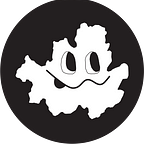Uninformation Mapping & Video: Technical Notes
Previously: Artist’s note
E Roon Kang, Wonyoung So
If you are driving from Seoul to Busan, chances are you will take the Gyeongbu Expressway. It is probably the most efficient path; however, we know that the Expressway is not the only road to Busan. If you took only national highways and local roads, for example, you could admire the landscape passing by and afford to dine in a small town you happen to encounter. Not every travel has the aim of reaching the destination as fast as possible; many travelers do travel inefficiently.
Today’s online map services such as the ones by Google, Naver, or Kakao operate like the Gyeongbu Expressway. These services are designed to deliver information efficiently and quickly, and in many cases they do. But what if you wanted an online map that acts like a national road? Or like a path without highways at all? Minkee Bae’s idea for Uninformation Mapping & Video felt like trying to reach a destination not accessible using highways. One can probably get anywhere some way or another, but this specific destination required the usage of several fragments of paved and unpaved roads, bridges and crosswalks, as well as unfamiliar intersections.
Bae’s proposed map had for goal the correction of distorted maps, by distorting them again. Moreover, we wanted participants to be able to contribute to a single map, which would ideally be updated in real time during the workshop. The re-mapping of scanned maps was done using open source libraries used to manage raster map resources — bitmap image data used to display satellite photos, for example, as opposed to vector data used to depict buildings and streets.
Different types of efforts are made in open mapping communities in order to improve satellite image quality; these include combining multiple images in order to create a cloudless, clean image, and balloon mapping — a grassroots approach to obtaining high-quality photos in the local community. Images obtained through these efforts do not contain geographic information, so we need to georeference the points in the images so that they correspond to coordinates in the real world.
The same georeferencing process was used in our workshop, except the source images were distorted maps instead of satellite photos. We used the open source tool Quantum GIS, along with the Georeferencer plugin that has GDAL functionalities. The combined maps were then turned into a single map of Seoul in the Virtual Dataset (VRT) format, which was in turn rendered in the Unity game engine using buildings data provided by the Korea National Spatial Data Infrastructure Portal.
There were some technical hiccups during the workshop. Most notably, real-time rendering of raster images took up an unexpected level of computing resources, causing the server to crash several times. It came to us that open source projects feel like trying to reach destinations using unpaved roads with a flimsy cellular connection. Deliberately leaving behind convenient expressways that are products such as Naver Maps or Kakao Map, and going through the rough road of open mapping with all the participants, was a valuable experience.
Translated from Korean by Achim Koh
